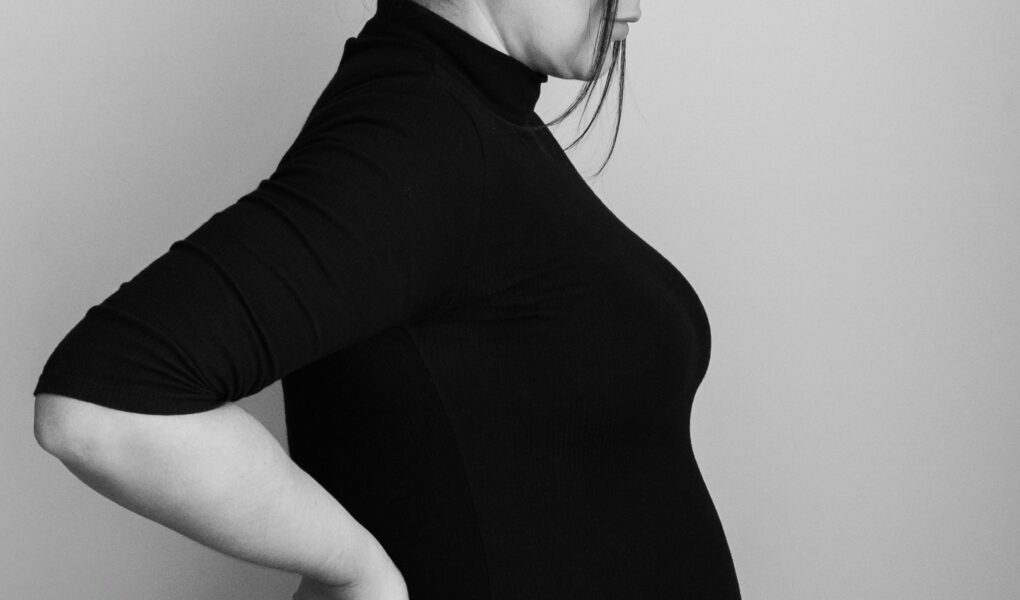Embracing Your Postpartum Body Changes: What to Expect and How to Thrive
The postpartum period is one of the most transformative times in a woman’s life. Physically, emotionally, and mentally, your body undergoes enormous changes. From your postpartum belly to hormone fluctuations and mental health, understanding and embracing these changes can help you feel more at ease during this phase of motherhood. Here, we’ll break down common postpartum body changes, how to manage them, and the importance of patience and self-compassion as your body heals and adapts.
Physical Changes: What Happens to Your Body Postpartum?
- Uterine Contractions and Involution: The Healing Process
The uterus is one of the most incredible organs in the female body, expanding up to 500 times its normal size during pregnancy. After childbirth, your uterus begins the process of involution, where it contracts and shrinks back to its pre-pregnancy size. This process typically takes six to eight weeks and can cause cramping, especially during breastfeeding.
A Deeper Look: You may also experience something called “afterpains,” which feel like menstrual cramps. These can be uncomfortable, particularly for women who’ve had multiple pregnancies. The cramping is often most noticeable when breastfeeding due to the release of oxytocin, which encourages the uterus to contract.
Pro Tip: If the cramping becomes uncomfortable, take over-the-counter pain relief as prescribed by your doctor, and use a heating pad to relax the muscles in your lower abdomen. Remember that this discomfort is a sign of healing and will gradually subside.
- Vaginal Healing and Lochia: The Body’s Natural Cleansing Process
Lochia is the vaginal discharge that occurs after childbirth. It’s a combination of blood, mucus, and tissue that your body no longer needs post-pregnancy. Lochia will change color and consistency over time, starting as bright red and transitioning to pink, brown, and then yellowish-white. This process usually lasts between four to six weeks.
The Experience: Lochia can feel similar to a heavy period at first, but it lightens up as the weeks go by. It’s essential to use heavy-duty maternity pads initially, as tampons or menstrual cups are not recommended during this time.
Pro Tip: Stay vigilant about the amount and smell of your discharge. If you notice foul-smelling lochia, large clots, or heavy bleeding beyond the first week, contact your healthcare provider as these could be signs of infection or complications.
- Changes to Your Abdomen: The Postpartum Belly and Diastasis Recti
You may find that your belly still appears pregnant for weeks or even months after giving birth. This is completely normal. After all, your body spent nine months stretching to accommodate a growing baby. The abdominal muscles, particularly the rectus abdominis, can separate during pregnancy (a condition called diastasis recti). This separation often causes a pooch-like appearance in the belly postpartum.
Personal Struggles: Many new moms feel self-conscious about their postpartum belly. The media tends to showcase women “snapping back” shortly after giving birth, but this isn’t the reality for most. It’s crucial to recognize that this is a natural part of the postpartum healing process, and it takes time for the body to re-adjust.
Pro Tip: To help heal diastasis recti, start with gentle core exercises under the guidance of a physical therapist. Avoid crunches or sit-ups early on, as they can worsen the separation. Strengthening your pelvic floor and deep core muscles can promote healing. Patience is key here, and it may take months before your abdominal muscles regain their full strength.
- Breast Changes: From Fullness to Engorgement and Beyond
After childbirth, your breasts undergo drastic changes as they prepare for lactation. Initially, your breasts may feel full, firm, and even uncomfortable due to milk production. Engorgement can occur within the first few days after delivery, particularly if you’re breastfeeding.
The Physical Shift: For some women, engorgement can lead to rock-hard breasts that are painful to the touch. This happens when there’s an overproduction of milk, or the baby isn’t feeding as often as expected. Mastitis, an infection of the breast tissue, is another potential complication and is characterized by redness, warmth, and flu-like symptoms.
Pro Tip: If you’re dealing with engorgement, try breastfeeding frequently or pumping to relieve pressure. Use cold packs to reduce swelling between feedings and apply warmth just before nursing to help with milk flow. If you notice signs of mastitis, contact your doctor as antibiotics may be required.
- Hair Loss and Skin Changes: Postpartum Shedding and Glow
During pregnancy, you might have noticed thicker, shinier hair. This is due to hormonal changes that delay normal hair shedding. However, after giving birth, hormone levels return to normal, leading to a significant amount of hair loss. This condition, called postpartum telogen effluvium, can be alarming but is usually temporary.
Skin Concerns: Many women also notice changes in their skin post-pregnancy. Hormones can lead to breakouts, pigmentation issues (like melasma), or dry patches. Additionally, stretch marks may become more visible, particularly on the abdomen, breasts, and thighs.
Pro Tip: Postpartum hair loss usually peaks around three to four months after delivery and typically resolves by your baby’s first birthday. Gentle hair care, scalp massages, and maintaining a balanced diet can help. For skin care, use moisturizers rich in vitamin E, cocoa butter, or hyaluronic acid to improve skin elasticity and hydration.
Hormonal Changes and Their Emotional Impact
- The Role of Hormones in Mood Swings and Postpartum Depression
After giving birth, there is a dramatic shift in hormones, especially in estrogen and progesterone levels. This can lead to the “baby blues,” a temporary period of heightened emotions, tearfulness, and mood swings that lasts a couple of weeks. For some women, these emotional shifts may lead to postpartum depression (PPD), a more severe and long-lasting condition.
The Baby Blues vs. PPD: While the baby blues are common and usually fade as hormone levels stabilize, PPD involves persistent sadness, anxiety, feelings of guilt, and exhaustion. This can significantly impact your ability to care for yourself and your baby.
Pro Tip: If you feel that the sadness or anxiety is too much to handle, or if it’s not improving after the first few weeks, seek help. Postpartum depression is treatable with therapy, medication, and support from family and friends. You don’t have to navigate this alone, and seeking help is a sign of strength.
- Libido and Sexual Health: What Happens After Baby
Hormones also play a significant role in your sex drive after childbirth. It’s common to experience a lower libido due to hormonal fluctuations, physical discomfort, and exhaustion. Vaginal dryness, especially if you’re breastfeeding, can also make sex uncomfortable.
A Tender Transition: For some women, the fear of discomfort or the emotional shift of becoming a mother can make resuming sexual activity feel daunting. It’s crucial to take things at your own pace and communicate openly with your partner about your needs.
Pro Tip: Vaginal dryness can be alleviated with over-the-counter lubricants. If you’re concerned about pain during intercourse, consider pelvic floor physical therapy to address any underlying issues. Remember that intimacy can take many forms, and reconnecting with your partner emotionally is just as important as physical closeness.
The Psychological Battle: Learning to Love Your Postpartum Body
- Body Image Struggles: Breaking Free from Unrealistic Expectations
The pressure to “bounce back” after pregnancy is everywhere, from social media to celebrity culture. Many women feel frustrated or ashamed when their bodies don’t return to their pre-pregnancy shape as quickly as they had hoped. This can lead to feelings of inadequacy or frustration.
Reframing the Narrative: It’s important to shift the narrative around postpartum bodies. Your body has just completed an extraordinary task, and it deserves time and care to recover. Embracing your body as it is—a body that has grown, birthed, and nourished a baby—can foster a more positive and compassionate self-image.
Pro Tip: Focus on what your body has achieved rather than what it looks like. Celebrate small victories, like how strong you feel after a walk or how your body is feeding your baby. Practicing gratitude for your body’s capabilities can help shift your perspective.
- Self-Care and Mental Health: Making Time for You
Motherhood can feel all-consuming, leaving little time or energy for self-care. However, taking time to care for your mental and emotional health is essential for your overall well-being. Self-care doesn’t have to mean spa days or extravagant gestures. Sometimes, it’s as simple as taking a moment to breathe deeply, showering uninterrupted, or enjoying a quiet cup of tea.
Pro Tip: Make self-care a non-negotiable part of your day. Whether it’s five minutes of deep breathing, a short walk outside, or journaling before bed, these small moments can recharge you and enhance your overall mood. Delegate responsibilities where possible and remind yourself that caring for yourself is also caring for your baby.
Embracing Your New Normal: A Final Word
The postpartum period is a time of immense change, but it is also a period of profound growth and transformation. While your body may look and feel different than it did before pregnancy, it is important to remember that every stretch mark, scar, and change tells a story of strength, resilience


[…] Postpartum Mental Health […]